
How to Find and Capture Epic Landscape Photos Above the Clouds
In order to capture moments above clouds or fog, you have to find them first. In some places, this can be an easy task, while in others it can be a rare occurrence.

In order to capture moments above clouds or fog, you have to find them first. In some places, this can be an easy task, while in others it can be a rare occurrence.

Turning on the lights in your photos can change the whole atmosphere of your scene and let the glow …
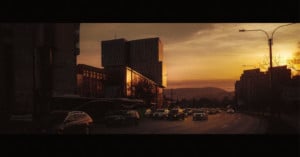
I'm sure over the last few years all of us photographers have heard the word cinematic so much that in the end, it may have lost all meaning. Is every photo with crushed backs and a cyan-orange color grade "cinematic?" I'd say, no.

We’re beginning to see a resurgence in film photography and for those of you who are looking to get into it but have no experience, it can be hard to decide where to start.

Street photography is a category of photography that is dear to my heart. It’s the first category of photography that I tried to learn and master and over the many years, I’ve learned many skills and techniques.

For this landscape photo, I wanted to get back the warm sunrise light, especially on the mountain face in the back. Also, I wanted to restore details, mostly from the darker parts in the foreground to have a nicely balanced exposure.

After I published a story on sunglasses for photographers, I got a ton of emails asking how I lit the series. So, while on the road for a recent photo shoot, I took some time at my AirBNB and wrote out how I approach what is called "split color lighting."

Never take a blurry city twilight shot again! If you follow these tips, techniques, and gear recommendations, you'll never be disappointed with your cityscape photos again.

When it comes to photography, depth refers to the balance of what is in and out of focus. The right depth creates a sense of space and helps draw the viewer in, and adding depth to your product photography will help the product pop.

The Deakinizer lens is a specially modified optic that was commissioned by Roger Deakins for the 2007 film "The Assassination of Jesse James by the Coward Robert Ford" used to create an old-timey feel to the footage, giving the scenes captured in it an almost tilt-shift look.
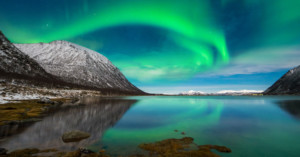
The northern lights, otherwise known as aurora borealis, are the winter-time spectacle that sees northern skies filled with incredible dancing lights. Caused by the interaction of photons exciting the gas molecules in Earth’s atmosphere, they can appear as green, pink, or blue. Photographing them is near the top of almost all photographers’ wish lists, but getting a good shot is decidedly difficult.

By removing color, we change how the viewer’s eyes see the photograph. No longer dependent upon color cues, we …

So, you just bought a fancy new telephoto or macro lens and can’t wait to get in super tight, frame-filling photos on a cool subject of animals or plants set off against a posterboard smooth background. After all, that’s why you spent lots of money on those lenses, right?
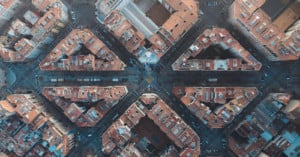
As a professional photographer, I use a lot of different cameras. At any given time, I can use really expensive full-frame cameras combined with the best glass money can buy, to mid-range cameras with kit lenses, all the way down to even compact cameras that fit in my pocket.
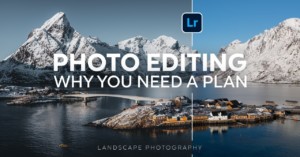
When I started my journey in photography, one aspect that fascinated me the most -- and this extends even to today -- was photo editing. I remember my first edits. I was so delighted to see how my images changed drastically by just moving a few sliders in Lightroom or Photoshop.

I create my landscape photography with film and digital technical cameras and received a request to share how I compose in the landscape with the gear I use.

It was the late-eighties. I had been working at Galoob Toys as a designer on the Micro Machines line, creating cars and playsets for several years. A dream job, drawing and painting cars and roadside architecture for a living, but I also craved something different that I could do for personal work.

In photography, many aspects can make an image successful, and in my opinion, what defines the bones of a great photo is a good composition. Instead of thinking composition like a series of canonical rules, I much prefer to use principles like connection, tone, colors, shape, relationship, light gestures, and so on.

A common post-production question involves Opacity and Fill, and what the differences are between them when it comes to photography. In this 14-minute video, Marc Newton from The School of Photography explains what sets them apart and how properly using them can dramatically improve your images.

Photographer Kevin Raposo normally produces quick, easily digestible videos that only last a few minutes, but in a bit of a shift, his latest 14-minute video shows how he shoots both photos and videos for his real estate photography clients and explains why you too should offer both.

This past weekend, I had the pleasure of shooting some product photography for my friends over at HDK Snowmakers. They are a snowmaking machine manufacturer for some of the country’s largest ski resorts and specialize in hyper-efficient machines that keep skiers on the slopes, while not guzzling up tons of water.

If you're just getting started in photography and want to build upon a solid foundation, here's a helpful 9-minute video by the popular YouTube channel Mango Street that covers 5 basic photography techniques for beginners.

Expert wildlife photographer Steve Perry has created an excellent "crash course" in Bird in Flight photography that he's sharing for free with all of us. The video covers 10 techniques/tips that "will give you all the basics you need to start filling your memory card with wall-hangers."

As camera technology continues to progress, the way in which we operate them is changing as well. Photographers should always use the most familiar and effective technique to get the shot, and to that end I want to be clear about the purpose of this article: I’m not trying to convince anyone to blindly stop using back-button focus.

Landscape photographer and LUMIX Ambassador James Popsys has put together a video breaking down five of the most overused photography techniques in landscape photography. From long exposures of water, to sky replacement, he explains why he feels that each of these are either used badly, too often, or both.

Here's an in-depth 28-minute tutorial from the Photoshop Training Channel that will show you how to enhance and create amazing eyes in portrait photos using Photoshop.
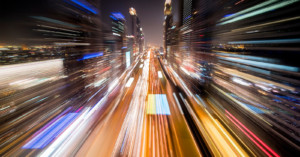
Want to see some jaw-dropping camera work? Check out this 3-minute trailer for the upcoming feature film Awaken, by renowned time-lapse photographer Tom Lowe. It's a documentary that explores humanities relationship with both nature and technology.

In this short-but-useful tutorial from DSLR Video Shooter, Caleb Pike runs you through 5 video and photography uses for simple foam board. Get out a pen and a pad, this photo DIY 101.

The Creative Cloud team at Adobe has launched a new weekly interview series title “Make It”. The show runs at around 10 minutes, and features members of the Adobe team interviewing guest creatives, including photographers. The first episode featuring a photographer is embedded above, with Lindsay Adler in the hot seat.
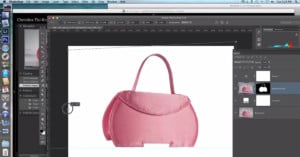
Want to learn about product photography editing techniques? A small trove of helpful video tutorials has been found in an obscure YouTube channel that had previously gotten no attention.

We're always looking to up our Photoshop game, but the lists of Must Know "techniques" or "skills" or "tools" we run across typically disappoint us by being either to basic or too niche. This useful Top 10 by Nate Dodson of Tutvid is an exception.

There are no unbreakable rules when it comes to how you should compose your photographs. After all, who likes rules except for your old school principal or heads of H.R. departments? There are, however, several photography composition guidelines you can use to help improve the composition of your photos.

Canadian filmmaker Scott Portingale has released a new short mixed media film titled "Infinitude." Created by hand using an assortment of camera techniques, the film tells the story of the evolution of matter and energy over time.
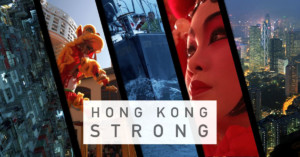
Traveling filmmaker Brandon Li has been chronicling his travels around the world over the last several years through short films. His latest one, titled "Hong Kong Strong," is one that's filled with creative camera techniques and editing tricks.

In this video and post I’ll cover 28 great features, tricks, hacks, and more of Adobe Photoshop CC 2015. Some are simple, some are difficult, some are well known, and some are more like Easter eggs.
If you want to learn about multiple layer styles, layer mask tricks, whitening teeth, black and white photos, precision with the Brush tool, and a bunch more, this is the tutorial for you!

As a tribute to Photoshop for its recent 25th birthday, Lynda …

If you're just starting out in Adobe Lightroom and would like some guidance on how you can use the software to improve your photographs, here's a free lesson that may be of interest to you. Photography instructor Tim Grey shares his top 10 tips for optimizing photographs in Lightroom.
The talk runs for nearly 2 hours, so you'll need to carve a chunk out of your day to watch it, but it could be helpful for anyone in need of a primer on some basic tools.

Filmmaker Richard Michalak has spent over 30 years behind the camera, and in the video above by Hugh Fenton he condenses all of that knowledge into a set of tips, techniques and concepts that will prove to be incredibly useful whether or not your interests involve moving pictures.

Firework photographs are generally pretty uniform in their appearance: a dark sky, glowing sparks that are either points or lines depending on exposure time, and perhaps some views of the surrounding area. When photographing a major fireworks show last week, photographer Rob Shaw of BackFromLeave Photo wanted to do something different. He played around with various camera techniques and captured a set of firework images that is quite different than most of the images you'll see online.

Film photography is similar in many ways to digital photography, and most of your standard digital photography techniques apply to film too. You just have to understand the peculiarities of film and its limitations and you’re good to go.
That will be explained in detail in this article, which presumes readers are already reasonably proficient at digital photography and are embarking upon film photography for the first time.